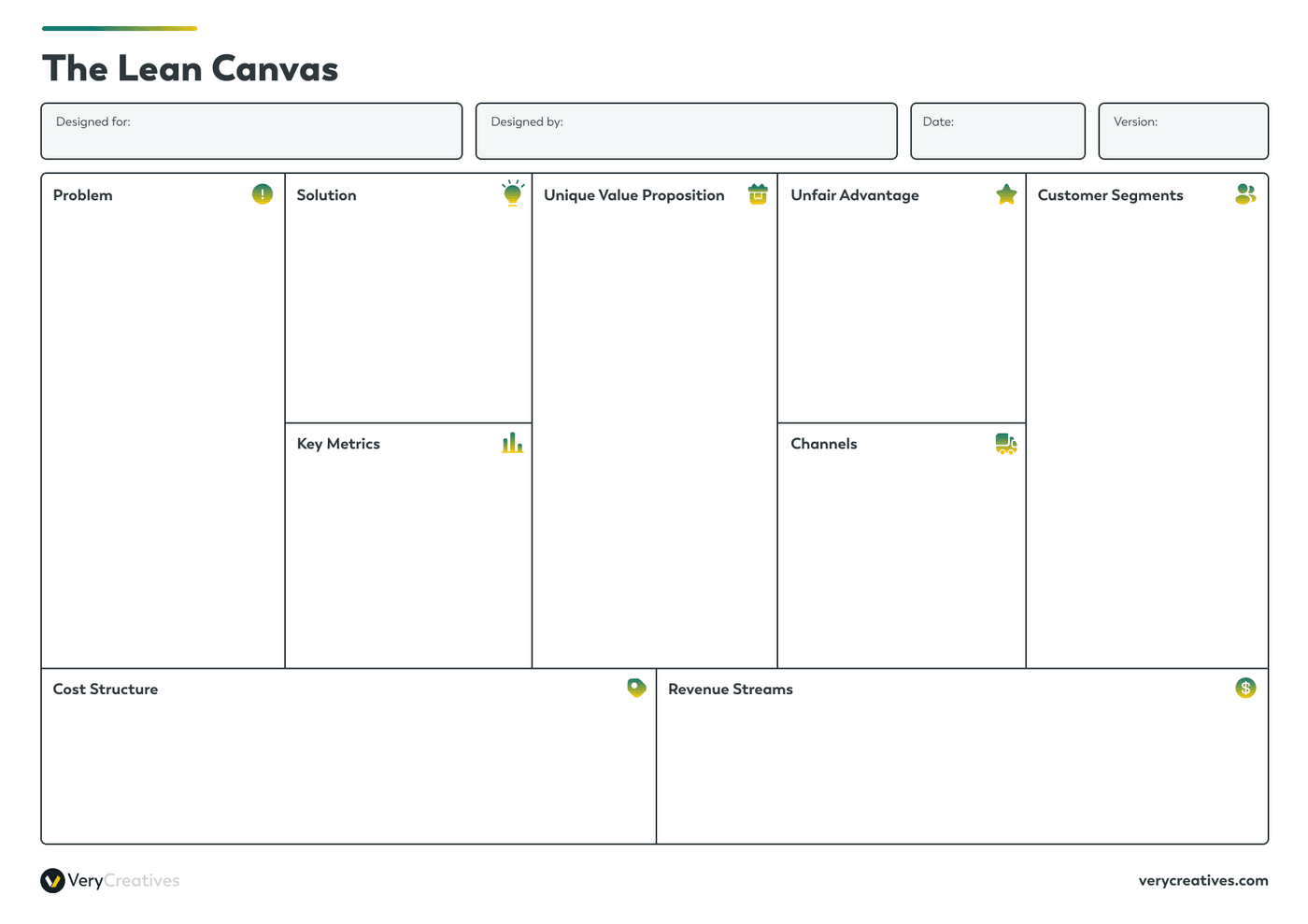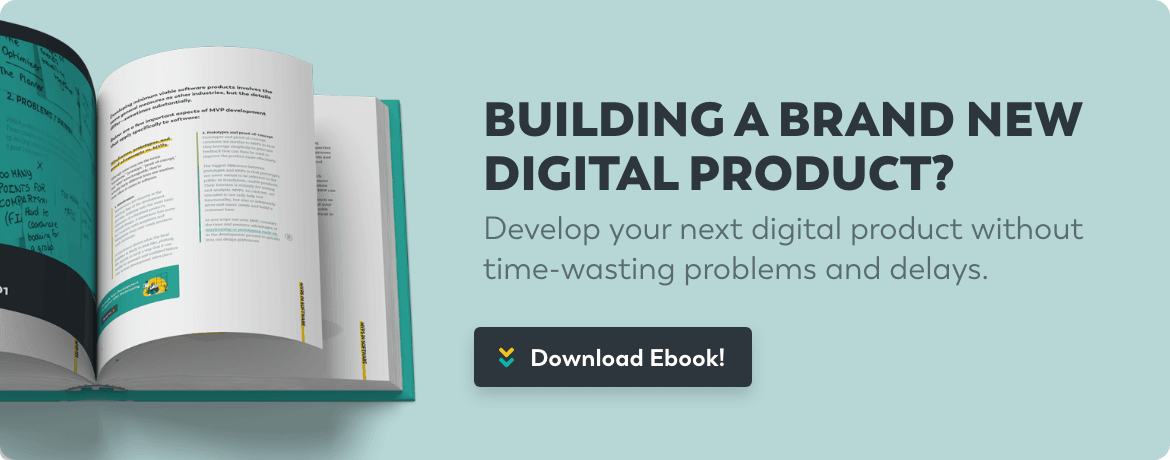The startup journey isn’t easy. While writing a novel of a business plan might help your funding pitch, it won’t help you test out ideas in the early stages. That’s why we want to talk about the Lean Canvas startup strategy—an innovative alternative to the business model canvas.
Lean Canvas: The startup’s solution to product strategy
First, what is a Lean Canvas? It’s a one-page document describing the problem-solution strategy for your business. The Lean Canvas approach lets startup founders put their ideas into perspective and ultimately create a minimum viable product (MVP) that generates a reliable revenue stream.
Startup founders can quickly create and update their Lean Canvas, share it with stakeholders, and cut out unnecessary information to show simple, straightforward ideas.
The nine sections of a Lean Canvas startup business model
While the traditional business model canvas works well for existing companies, it’s not a viable tool for most startups. That’s where the Lean Canvas document comes in—it uses the same structure but is modified to help startups launch a successful MVP.

Download template: The Lean Canvas PDF
1. Customer segment
First, it’s important to understand the target group your product will serve. When filling out a Lean Canvas template, think about more than your primary customer: What other parties could benefit from your product?
If you identify multiple customer segments that you want to target, it’s never a bad idea to create a Lean Canvas document for each one.
Learn more: How to Identify the Target Market for Your Startup Product
2. Problem
Here’s where you’ll list one to three problems that you want your product to solve. Think about your customers’ daily routines: What challenges do they face that make their jobs or lives difficult?
Looking at your target customers and their top problems can help you shape your product’s solution.
3. Unique value proposition (UVP)
Your UVP is a statement that shows how your product differs from others on the market and gives customers a reason to choose you over other alternatives. You can create a simple, effective UVP by focusing on the positive effects of solving your customers’ problems.
This should be short, to the point, showcase what your product does, and flaunt its benefits. Your early adopters can provide valuable feedback when working on your UVP.
4. Solution
How is your product going to solve the problems you listed above? Right now, there aren’t any right or wrong solutions—refining your solutions through testing and feedback is part of the Lean Canvas process.
Brainstorm your solutions with anyone who will listen. Talk to your early adopters, co-founders, and even family and friends to get a list of possible ideas.
5. Channels
How will you reach your audience? Even the best product will struggle to see success if it doesn’t reach the right customers. In this section, you’ll list the marketing methods most likely to get your product in front of your target audience.
From social and mass media to brick-and-mortar advertising, the options are limitless. You want to focus on where your audience will be—targeting customers on the wrong channels can easily waste valuable time and resources.
6. Revenue streams
The goal of every startup is to make a profit. In this section of your Lean Canvas business model, you’ll estimate the earnings from your product and start thinking about your pricing strategy. How will your product be profitable?
The goal of every startup is to make a profit.
This will likely change in the future—there’s some trial and error involved. You might start with a simple subscription-based model and later move to a tiered subscription or one-time purchase. Nothing in your Lean Canvas document is set in stone; estimate to the best of your abilities and move on to the next section.
7. Cost structure
Startup founders need to consider the costs involved in releasing a product. Make a list of any fixed and variable costs you can think of: How much will it take to create an MVP, conduct market research, design and host a website, etc.?
As your startup grows, operating costs will change, and you can make adjustments to your cost structure accordingly.
8. Key metrics
How do you know if your startup is heading in the right direction? You have to measure your product’s performance against the right metrics.
These metrics can be anything from mentions on social media to beta list signups and actual purchases. When your subscriptions or purchases start increasing, you know that you got the problem and solution sections right.
9. Unfair advantage
What advantage does your startup have that competitors can’t easily copy? This can be having a unique channel where you can reach your audience, ready buyers, SME team members, or anything else that sets you apart.
Figuring out this advantage can be a challenge for many founders, and if you can’t think of any at first, you can revisit this section as your business progresses. Feedback from early users can help make this more apparent.
Lean Canvas for startups: What comes next?
Ideally, you’ll spend less than an hour filling out your first Lean Canvas document. That may not sound like enough time to get all of your ideas down, but what comes next is the key to success—testing each section and revising your Lean Canvas as necessary. It’s hard work, but going through this process will save your startup time and money in the long run.
Learn more about product strategy and development to get your startup’s ideas to market successfully.
